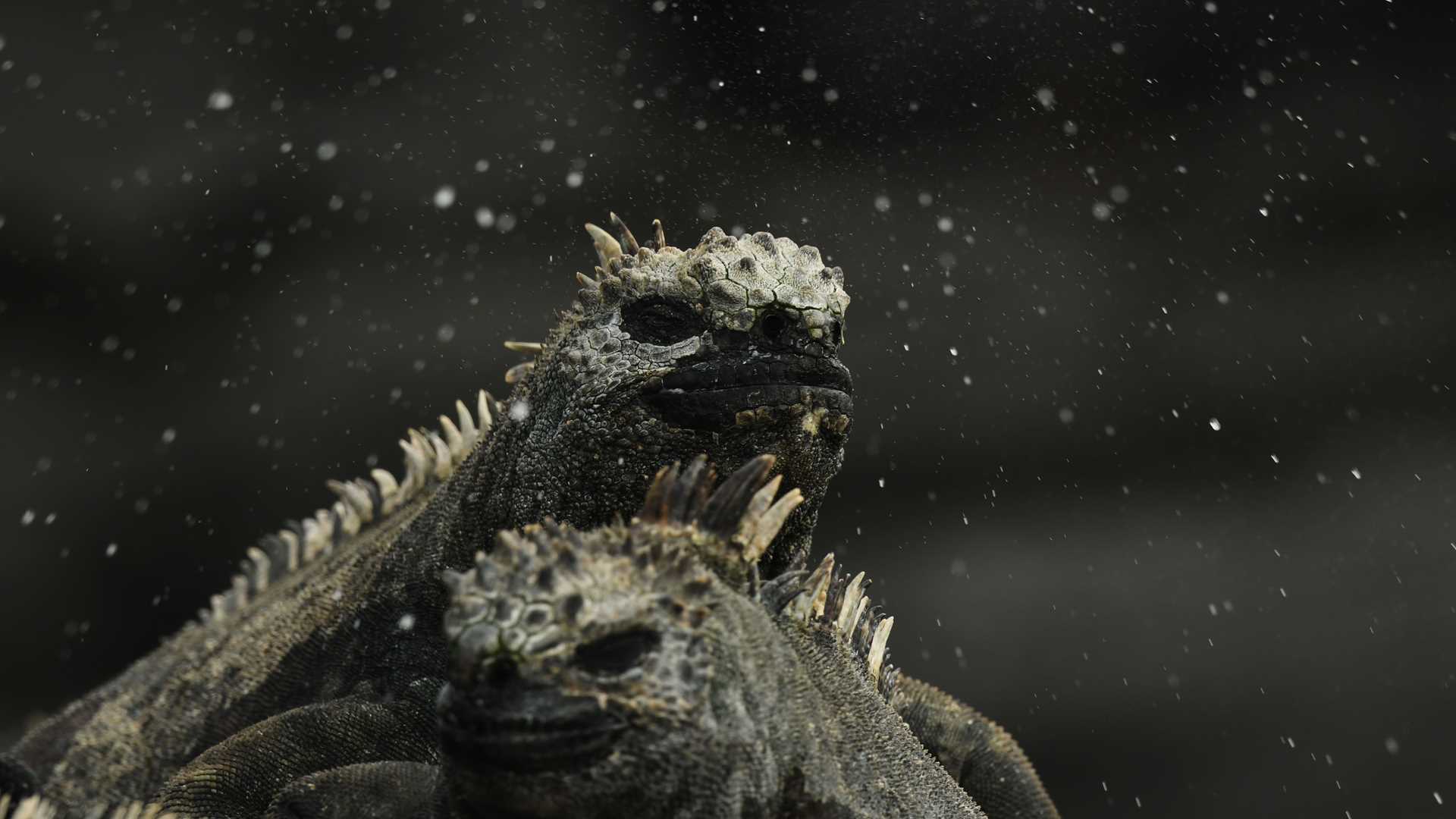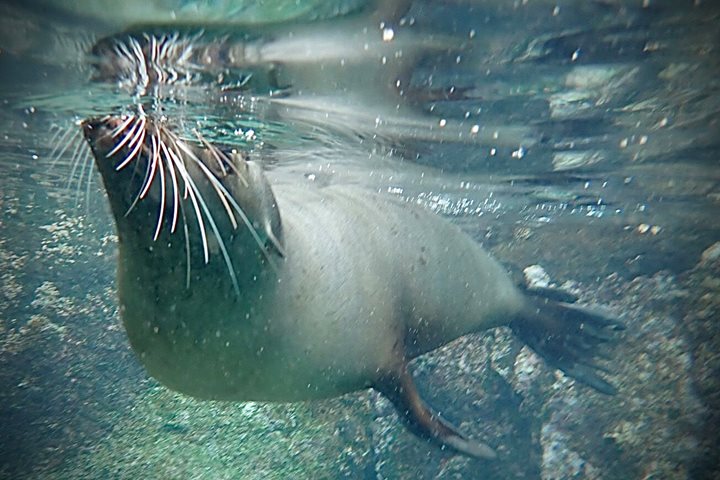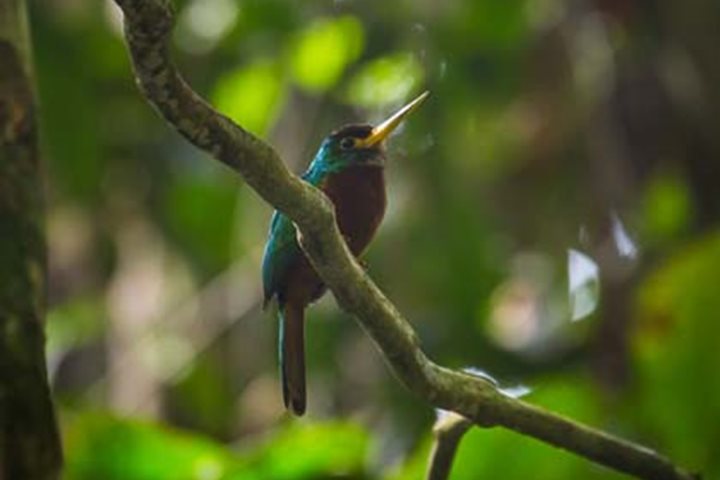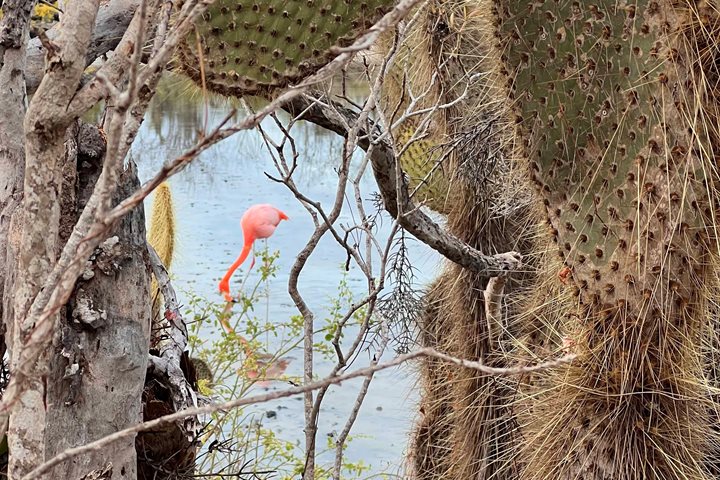After a great experience looking at the eruption of Wolf Volcano last night, we have arrived on the western side of Isabela Island. We celebrated crossing the equator onboard National Geographic Islander, and then we took our Zodiacs to explore the coastline of Punta Vicente Roca at the foot of Ecuador Volcano. The geology is spectacular. We observed an impressive cliff full of lava dikes, pyroclastic material, and volcanic tuff. Along the shoreline, many birds were resting and nesting. We saw many blue-footed boobies accompanied by their cousins, Nazca boobies. The brown noddy terns collected twigs and branches for nesting. On the black lava, thousands of marine iguanas basked under the sun. Galapagos penguins were the highlight; some of them molted their feathers on the rocks and others looked for small fish in the turquoise blue bay. The flightless cormorant is another interesting bird that nests in the place. These birds offer one of the best examples of adaptation and evolution on the islands. Cormorants fly all over the world, except on the Galapagos Islands. Here they lost their flight ability and instead developed the capability to be great divers. After a Zodiac ride, we came back to the same area to snorkel with penguins, cormorants, marine iguanas, sea lions, and tons of the marine turtles that rest on the sandy seabed in this cove. What a spectacular moment in the water. Being surrounded by so many creatures seemed like a dream.
In the afternoon, our Global Explorers, young guests, learned how to drive the Zodiacs. At 3:30 p.m., we disembarked on Fernandina Island, one of the most pristine islands and one of the most active volcanoes on our planet. We walked along the shoreline to see a big colony of marine iguanas. A few of them finished their algae feeding in the ocean and came back to land to warm up under the sun. This helps them regulate their body temperature for the rest of the night.
The walk was astonishing. We saw many creatures everywhere. You can see a wide variety of wildlife with every single step. Sea lions played in the intertidal zone, crabs cleaned the coast, and birds rested on the rocks. The landscape is so dramatic that it seems unhospitable, how the earth was at the beginning. It is easy to see how the first animals struggled to survive in these hard and unique conditions. Galapagos is a living laboratory of evolution, and here we are to witness this incredible event.







